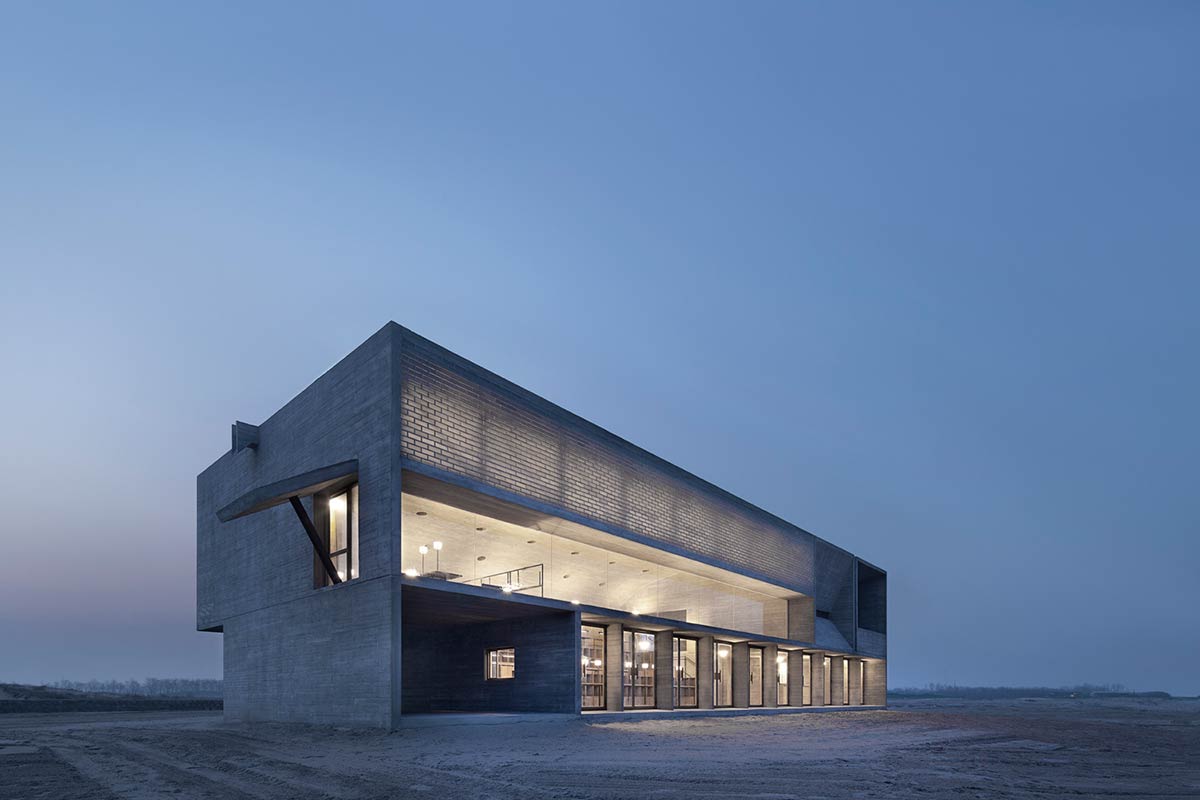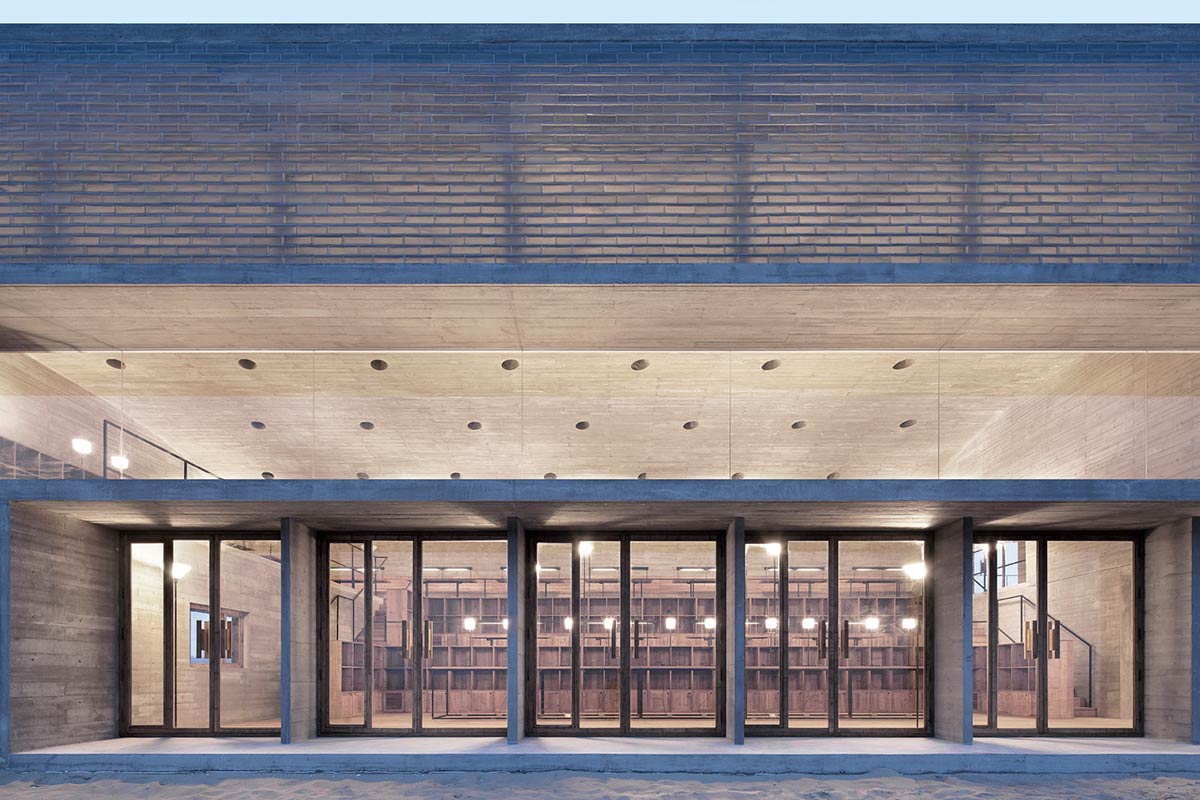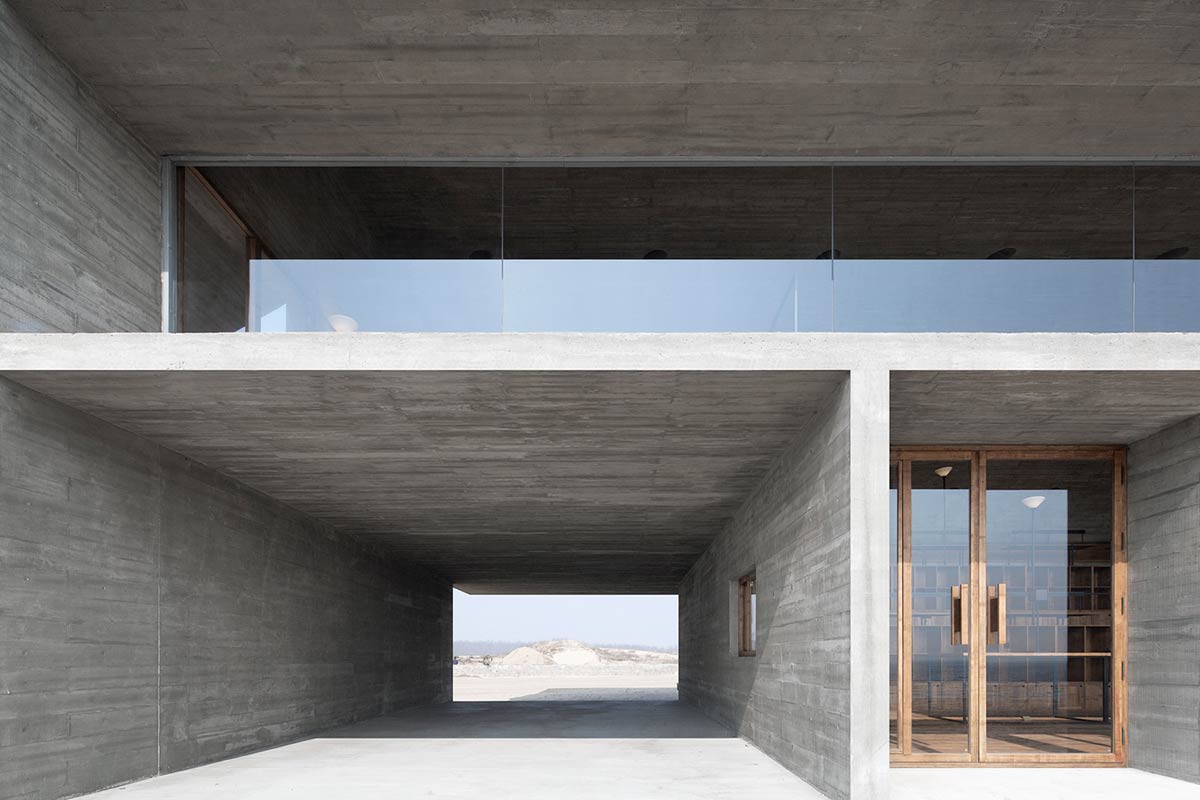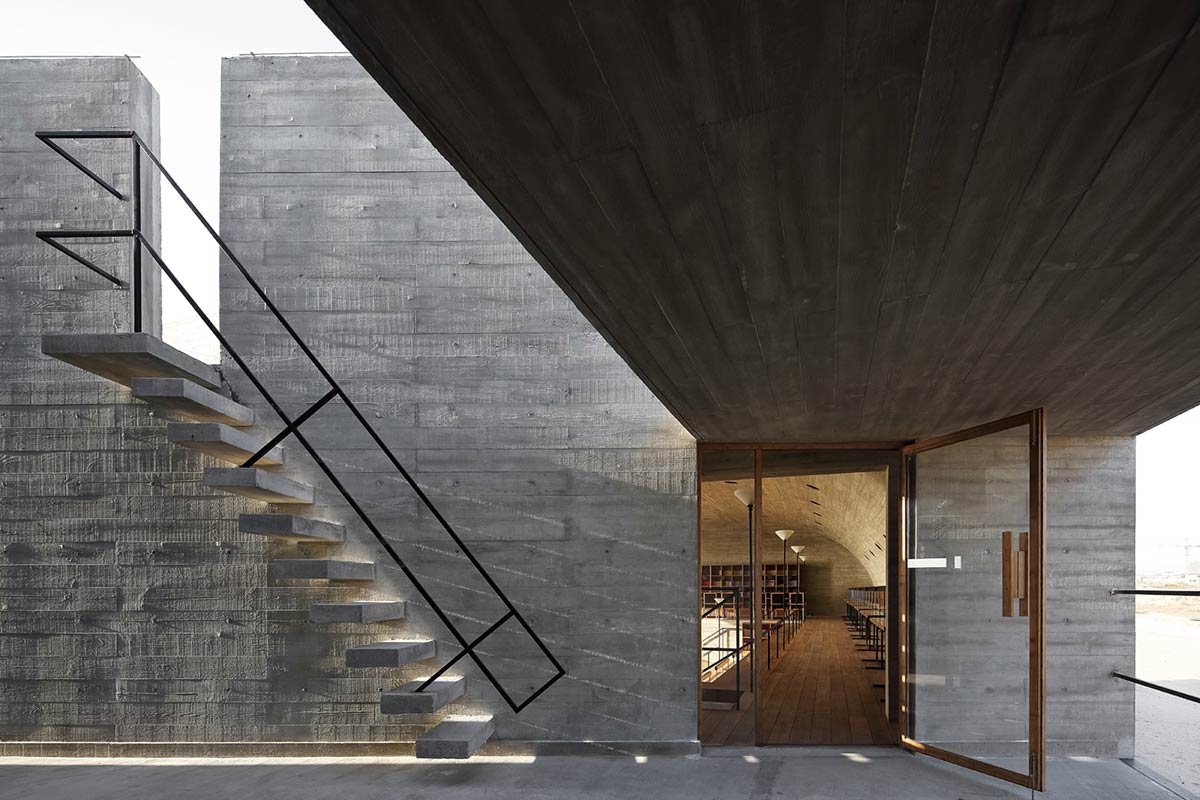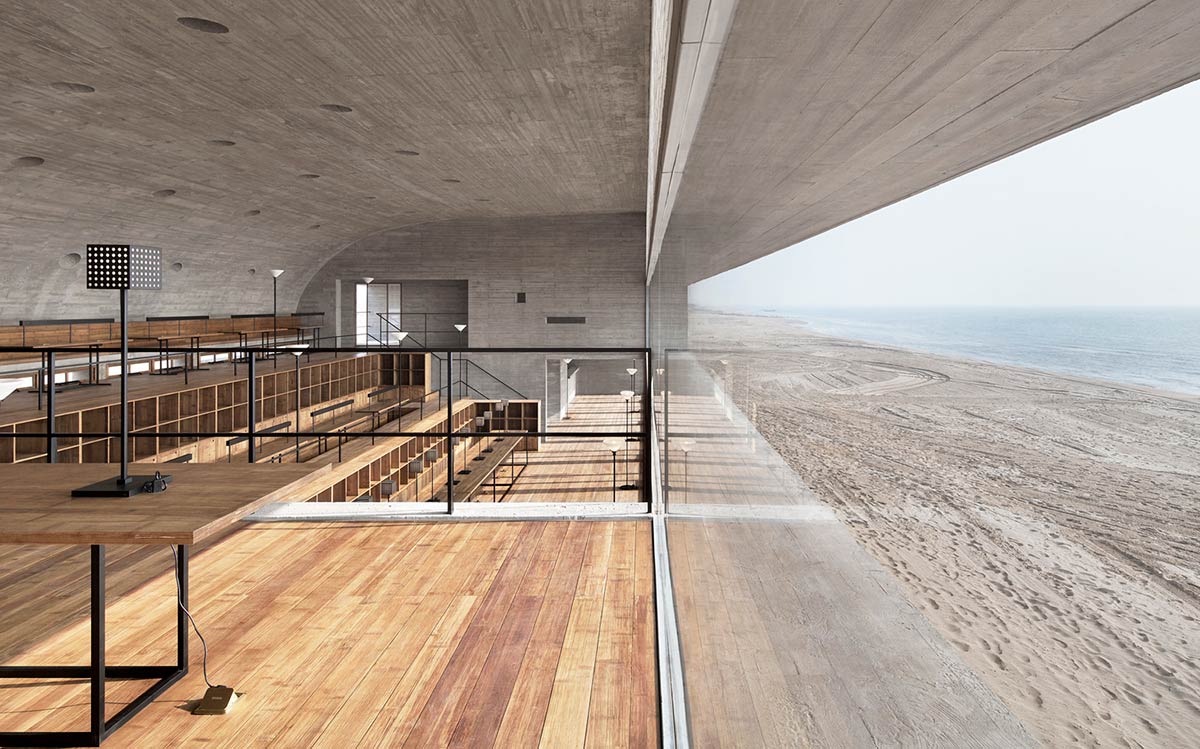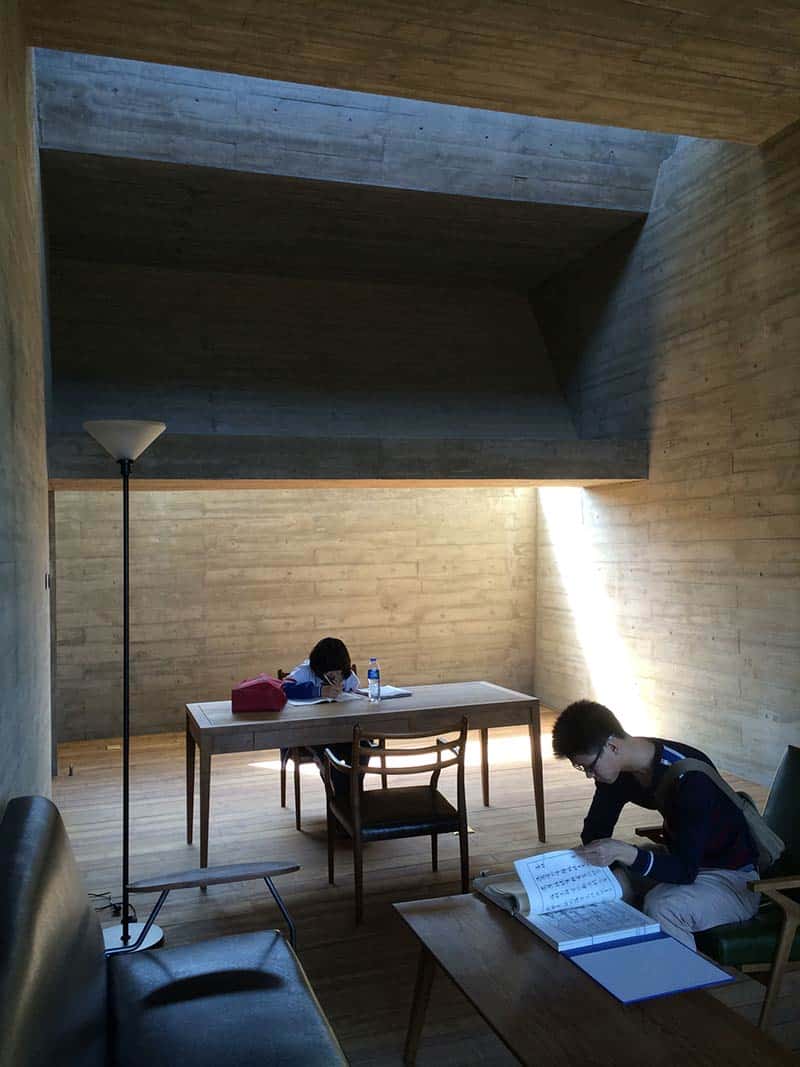The library is located along the seashore of China Bohai Bay. The design key point is focused on exploring the co-existing relationship of the space boundary, the movement of the human body, the shifting light ambiance, the air ventilating through, and the ocean view.
The design began with a section. The library houses a reading area, a meditation space, an activity room, a drinking bar, and a resting area. According to each space, we establish a distinctive relationship between space and the ocean; and define how light and wind enter into each room.
Reading Area
Ocean, an ever-changing character continues to alter from season to season, morning to night. It is like a drama play of nature.
As if giving the stage to this character of ocean, we pile up seating platforms raised toward the back, so that everyone has an unblocking view of the stage. Toward the sea, the building is enclosed by a series of operable glass walls at ground level.
When the weather is nice, the walls are open to the sea directly connecting inside and outside. On top of these pivot walls is a horizontal view window that goes across the library; it is the main framing of the sea view. To avoid interruption from any structural component, all the roof loads are carried by the steel trusses running above the view window. On both sides of steel trusses, we infill hand-crafted glass block masonries into the wall.
The wall softens the hardness of steel trusses. Furthermore, the translucency of such material is sensitive to light. It transforms both natural and artificial light inside and outside throughout different times of the day, smoothly changing the ambiance of the building.
The half-arched roof opens toward the sea and implies the main subject of the space. Meanwhile, the curvature allows wide-span running in both north-south and east-west directions. Several 30cm diameter circular openings are inserted and arrayed on the roofing structure. They can be open when the weather is allowed, and help to ventilate indoor air. During three seasons of the year – spring, summer, and fall, from 1:00 to 4:00 pm every day, sunlight would stream through those narrow air passageways and project light spots inside and meandering through space with time shift.
Meditation Space
The meditation space is sitting aside from the reading area. In contrast to the reading area which is bright, evenly distributed light, open, and public, the meditation space is rather dimmed, sharp of light and shadows, enclosed and private. There are two slim openings, 30cm wide, on the east and west sides of the room. One is horizontal and one is vertical; one captures the light of sunrise and the other grasps the sunset illumination. In this room, a drastic roof curve pushes the ceiling down low. Above this curve, it creates a low terrace to the rooftop. In this area, people hear the sound of the ocean, though the vision is out of reach.
Activity Room
The activity room is a fairly isolated space. Due to potential events and sound, it is being separated from a reading area with an outdoor platform in between. The light well on the roof facing east and the clear story at the west collect lights throughout the day from different directions. Warm and cold light overlap and tint the space simultaneously.
If we slice through the building along the north-south long axis, we can see how each space elaborates itself with the ocean distinctively. The movement and memory of the human body together choreograph a series of experiences.
Project Details
Location: Nandaihe, China
Type: Cultural – Public
Building Area: 450 M2
Client: Beijing Rocfly Investment (Group) CO., LTD
Architects: Vector Architects
Principal Architect: Gong Dong
Project Architect: Chen Liang
Site Architect: Yifan Zhang, Dongping Sun
Design Team: Zhiyong Liu, Hsi Chao Chen, Hsi Mei Hsieh
Structure: Concrete Structure
Material: Concrete, Laminated Bamboo Slate, Glass Block

